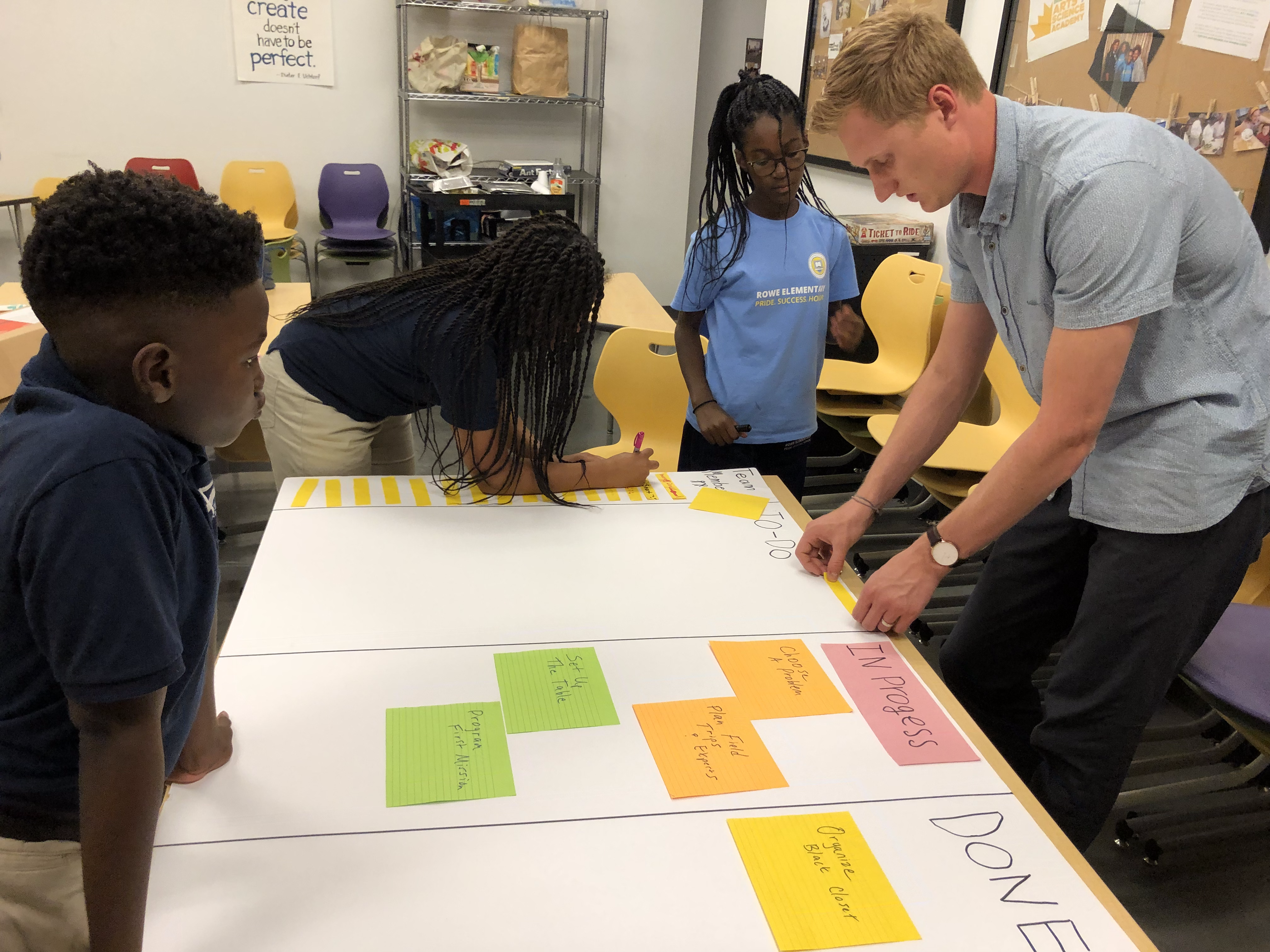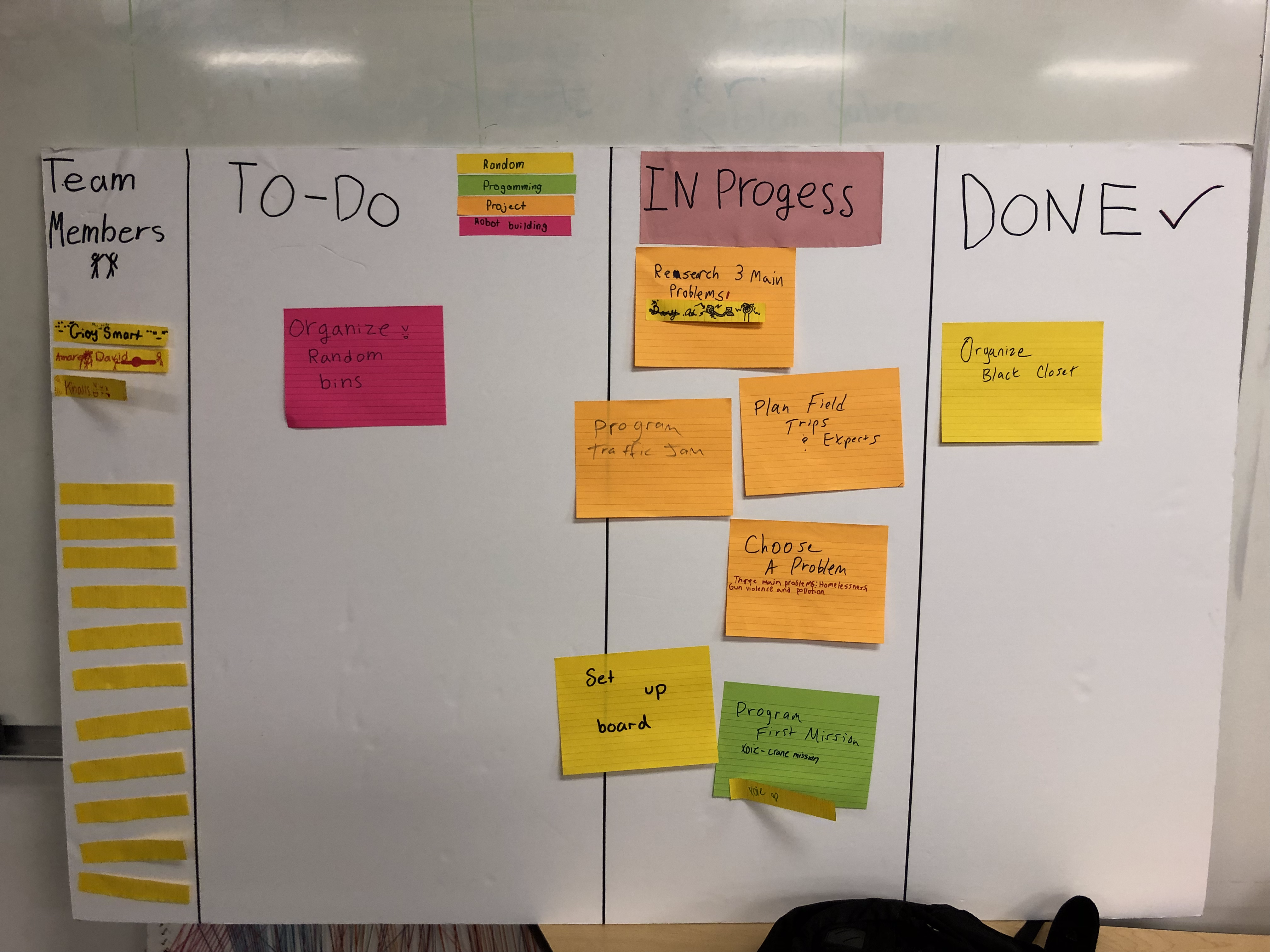Sprint Planning for First Lego League
This is my third year of coaching our First Lego League team. I’ve noticed a few common questions come up that we haven’t had a great system to answer in the past:
-
Does everyone know what they need to do each night? Sometimes I’ve seen kids don’t really know or understand what’s expected of them. The rules and missions can be daunting and the language very precise, especially for a younger team of 4th and 5th graders.
-
Does everyone have the help they need to be successful? Kids can get stuck on simple things, like where is the LEGO piece I need for this attachment or how do I save my program? They can also get overwhelmed by the steps needed for the project.
-
What happened last time? Our practices are two nights a week, and volunteer coaches and kids may only be there for some of them. It’s helpful to know what was accomplished last time so you can pick up where they left off.
We have tried digital solutions - a shared Google doc, Slack channel, and email - but those seem to rarely work. First, not everyone has access to Internet outside of robotics, and at practice, once the laptops come out distractions go through the roof.
This fall, we are trying something with a bit more structure that I borrowed from professional sofware engineering - a Kanban board and sprints.
Standup
Tonight, we learned about “standup”. A standup is a brief meeting where everyone is standing in a circle. We have a big red one-minute sand timer that gets passed around. Each person talks for one minute and answers three questions:
- What progress did I make last time?
- What am I planning to work towards tonight?
- What help do I need to make progress?
After everyone goes, we assess- are there gaps? If someone isn’t sure what to work on, then their teammates can make suggestions until each person has a project for the night.
Kanban Board
We track all the tasks on a “Kanban board”. I’m used to using digital versions of this such as Asana or Trello, but for this team a physical board is really effective. We use big post-its for each big task. Each kid has their own card which can move around and stick to the tasks. As people choose tasks, they are moved to “In Progress” with the person or people who are working on it attached.

So far we have only had two practices but it’s going well - the kids loved making the board and the first standup led to one of the most focused practices I’ve seen.

Sprint Planning
It’s possible that the daily standup will be sufficient; however, I think having a longer planning meeting every two or three weeks will be helpful. At the longer meeting, we’ll allocate 30-45 minutes at the beginning of practice to glom together three functions. In professional software development, these are sometimes combined and sometimes kept separate - we will have to experiment but I suspect doing them all at once will make the most sense.
- Demos - as the season progresses, it will be helpful to have mini-milestones to showcase the current progress of the robot missions and project. A formal demo gives everyone a chance to show what they’ve done to their peers.
- Retro - a quick reflection on what went well and what could be better during the last two weeks.
- Planning - we’ll look ahead to the whole remainder of the season, evaluate where we are compared to our goals and consider if the set of goals should change.
These kids are ready for a great season of learning and discovery! Can’t wait to see what they create and how they grow as a team. Hopefully the agile structure will help them along.